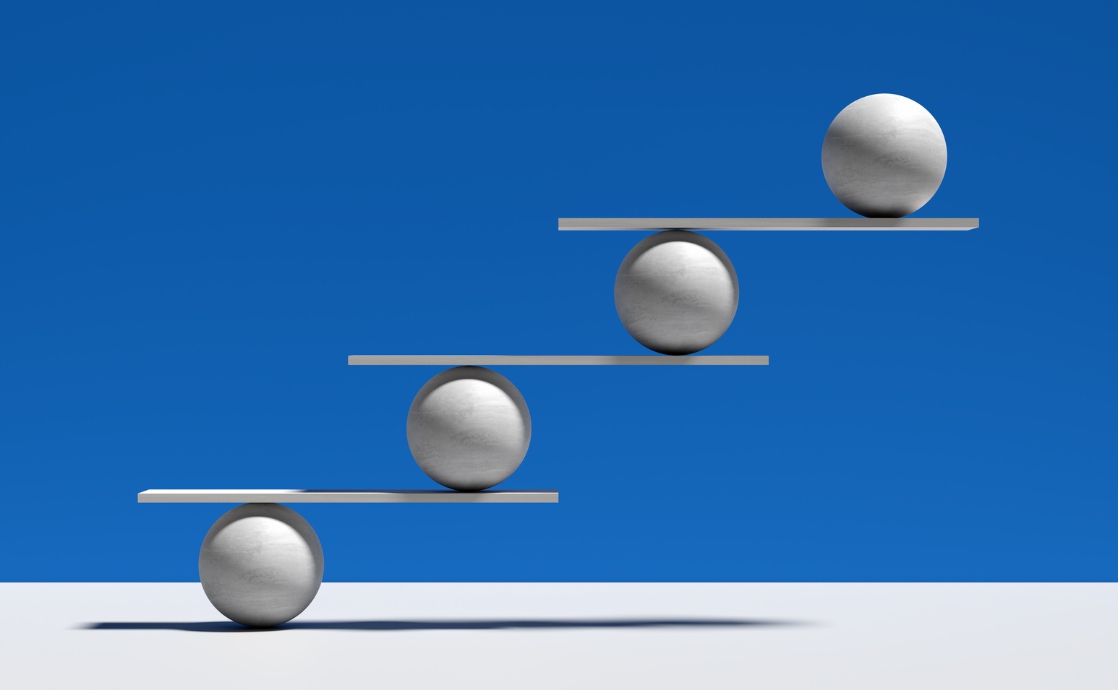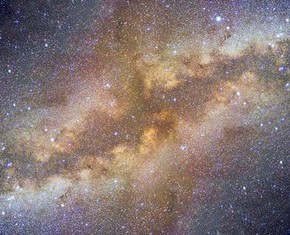The views expressed in our content reflect individual perspectives and do not represent the authoritative views of the Baha'i Faith.
The Middle Way — a term in a number of spiritual and philosophical traditions in both the East and West — means, as Aristotle suggested, finding the middle ground between two extremes.
For example, courage is the middle ground between cowardice and carelessness. This Aristotle called “the Golden Mean.”
For Buddha, the Middle Way meant the path between the extremes of asceticism and indulgence in pleasure.
RELATED: Kant and the Baha’i View: A World Republic for Global Citizens
The Baha’i writings also speak of the “Middle Way” and describe two general definitions of the term. The first, similar to Aristotle and the Buddha, counsels moderation in all things. Baha’u’llah, the prophet and founder of the Baha’i Faith, wrote: “Whatsoever passeth beyond the limits of moderation will cease to exert a beneficial influence.”
This really speaks about the importance of balance in our lives. Food is good, but we shouldn’t have too much or too little of it. Exercise is good, but over-exertion will lead to injury, while under-exertion will lead to inertia. Therefore, hitting the “sweet spot” between the two extremes is the key to just about everything in life. But how can we perfectly find the right balance between extremes and maintain that balance?
I’ve been asking myself that question for a long time, and as far as I can see, our life’s task involves finding that balance — an ongoing, never-ending endeavor. Like a circus performer on a balancing board, we need to constantly adjust ourselves to maintain our equilibrium. Often, just as we think we’ve got it perfectly stabilized, and we start to feel like we can be less vigilant, we might just slip and need to rebalance ourselves.
That’s hard because we’re not just trying to balance two extremes in a vacuum. We need to do so in the midst of life, in space and time, with loads of other factors affecting that balance.
When trying to eat a balanced diet, for example, we have to deal with our time limitations in preparing our food; we may have to consider family members who do not wish to eat like us or who cannot eat like us due to their own dietary requirements. We need to consider our mealtimes in relation to the times we wish to exercise and sleep. We have to think about the changing price of different foods due to inflation. All of these things and more make achieving a balanced diet a tricky thing indeed. But this doesn’t mean we should give up and just succumb to either our fanatical or lethargic tendencies.
Some meet this challenge of complexity through very careful planning and ultra-rational thought. They may calculate every calorie in every morsel of food they eat, meticulously plan all their meals for the week, and count every step they take throughout the day — and this careful, conscious approach may work for them.
Others take a “looser” approach to balance. One such approach to a balanced diet is encouraged by T. Colin Campbell in his book “Whole.” While it is true that we need a wide variety of vitamins and minerals, he says, achieving the “ideal” balance is a highly challenging task because of how vitamins and minerals interact with each other. Having too much of one thing will affect the absorption of another thing and vice versa. The approach that Campbell suggests is to simply eat a variety of different food types, especially natural whole foods with a variety of colors, in order to ensure that you get the right balance of nutrients. This doesn’t involve carefully calculating every vitamin and mineral but achieves balance through a more intuitive approach.
Another form of imbalance is when we are overly dependent on how things turn out in life; we want or don’t want things to be a certain way. In life, we are often obsessed with pursuing our wishes and fleeing discomfort instead of accepting what is. As Baha’u’llah revealed in his Most Holy Book, by placing God at the center of our lives, we can overcome this type of imbalance: “Lament not in your hours of trial, neither rejoice therein; seek ye the Middle Way which is the remembrance of Me in your afflictions and reflection over that which may befall you in future.”
By focusing our attention on the Creator, we avoid the two extremes of over-excitement and disappointment. Both extremes are the result of our attachment to this material world, so the way to overcome this is to attach ourselves to God, relinquishing our worldly attachments. When we do this, we become content with life.
This doesn’t mean that we can’t work for justice, pursue our dreams, follow our hearts, or enjoy the things of this world. It just means that we needn’t be attached to these things; we shouldn’t allow them to stand between us and God.
How do we know if something has become a barrier between ourselves and God? We may be able to check our feelings: are we overly excited about something, overly scared of losing something or someone, or preoccupied with things working out a certain way? If we are, then perhaps we have stepped out of balance and need to re-connect to the Middle Way of life.
Another meaning of the Middle Way can be found in the writings of the Bab, the prophet who proclaimed the coming of Baha’u’llah. In Nader Saiedi’s book “Gate of the Heart,” this provisionally translated passage explains:
Such conclusive truth hath been revealed through the gaze of the heart, and not that of intellect. For intellect conceives not save limited things. Verily, bound by the realm of limitations, men are unable to gaze upon things simultaneously in their manifold aspects. Thus it is perplexing for them to comprehend that lofty station. No one can recognize the truth of the Middle Way between the two extreme poles except after attaining unto the gate of the heart and beholding the realities of the worlds, visible and unseen.
Here, the Bab seems to be referring to the level of conception and understanding rather than the level of behavior and conduct. In any scriptural domain, including the Baha’i teachings, some statements or truths seem to contradict each other on the surface. But as the Bab suggests, if we change the way we look at them, we can see that they are not actually contradictory. However, to do this, we have to go beyond linear logic and use the more expansive aspects of ourselves. In this passage, the Bab refers to the “gate of the heart,” which may suggest the use of our intuition rather than our reason in trying to understand seemingly dichotomous truths.
RELATED: Boltzmann’s Philosophy and the Baha’i Teachings Against Dogma
In spiritual matters, one example may be the issue of Theodicy. On the one hand, God is all-loving and all-powerful, but on the other hand, evil exists. We see examples of evil throughout history, especially in modern times, the Holocaust and the devastation wrought by the Khmer Rouge being two prime examples. Trying to hold these two extremes in our minds can make some people doubt whether God exists; after all, if He is all-loving and all-powerful, why does He let these things happen? Why do innocent people need to die if God is loving?
By using the Bab’s “paradoxical logic,” we’re able to accept both “antagonistic” truths without them contradicting one another. On the surface, this may seem like a cop-out, in the sense that people want to believe that God is all-loving and that evil exists but don’t want to acknowledge that this coexistence is a contradiction.
The Bab is not suggesting that we ignore these disparate truths; he is pointing out that they cannot be resolved by logic alone, or at least the type of logic we typically use. We need to have an open heart and an open mind as well in order to resolve the conflicting truths of existence.
Here, we see how the Middle Way allows us to approach and better understand the polarities, extremes, and contradictions in life that we face on a daily basis. Navigating our course between these extremes seems to entail a life of moderation, devotion to God, and an open mind.
















Comments
Sign in or create an account
Continue with Googleor